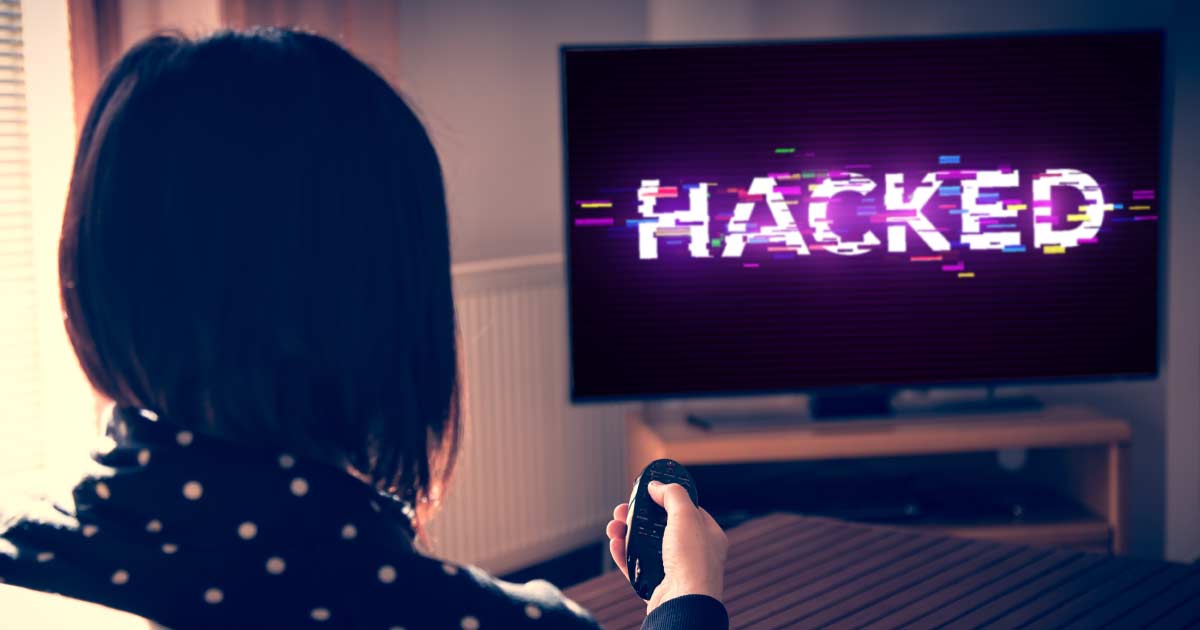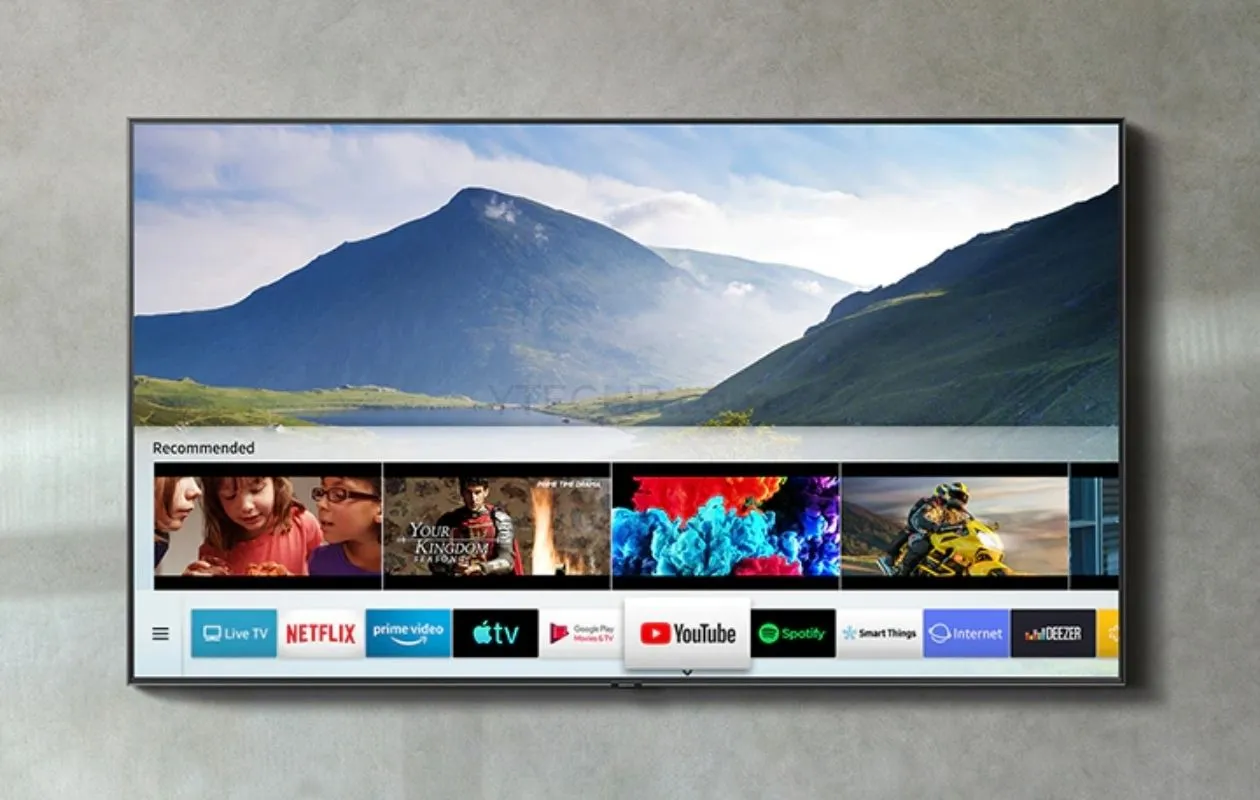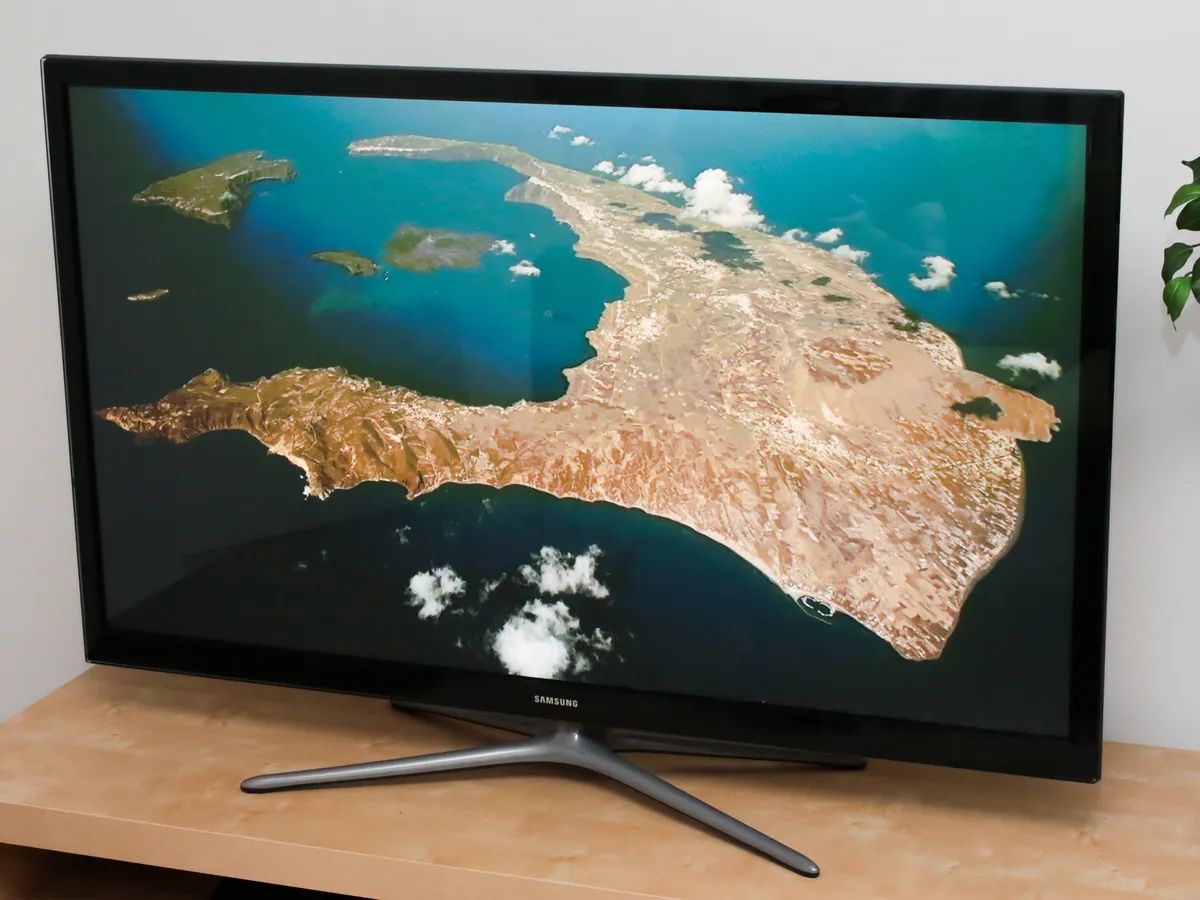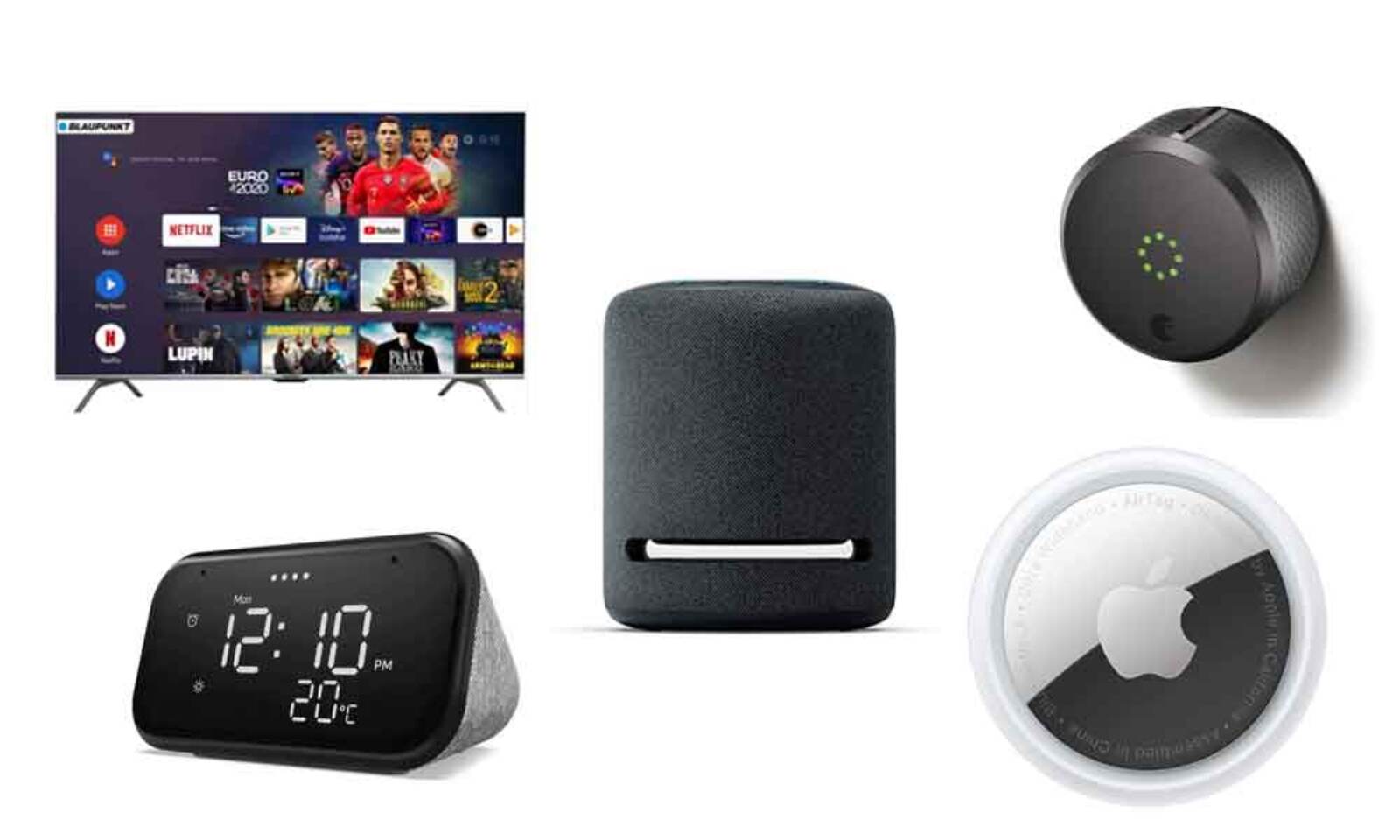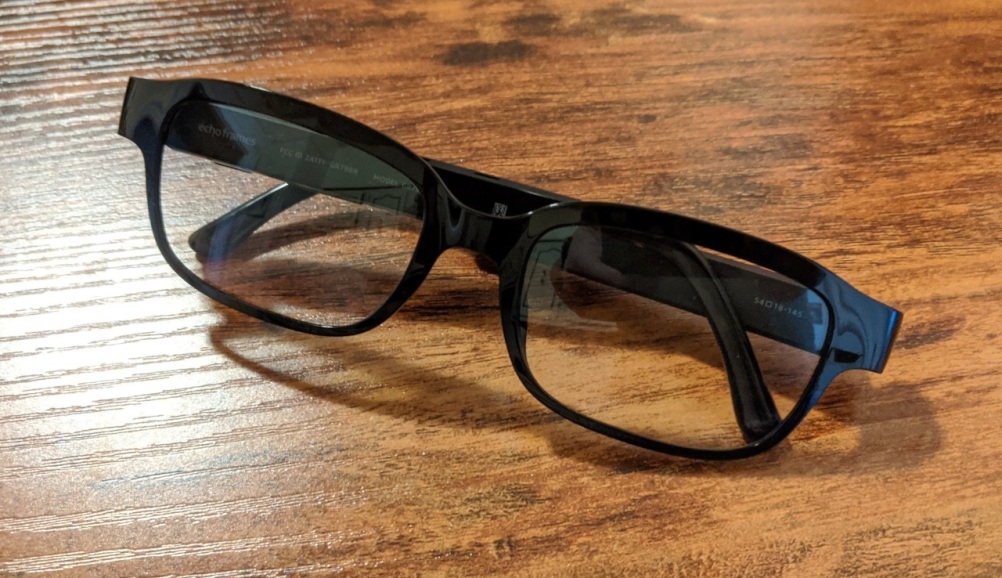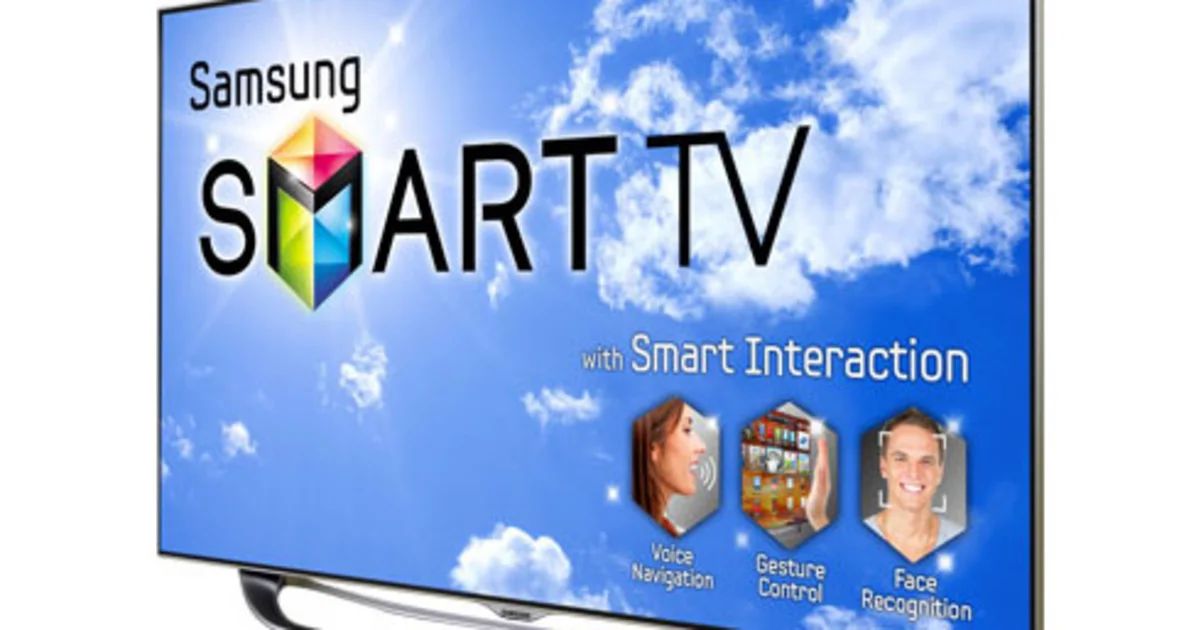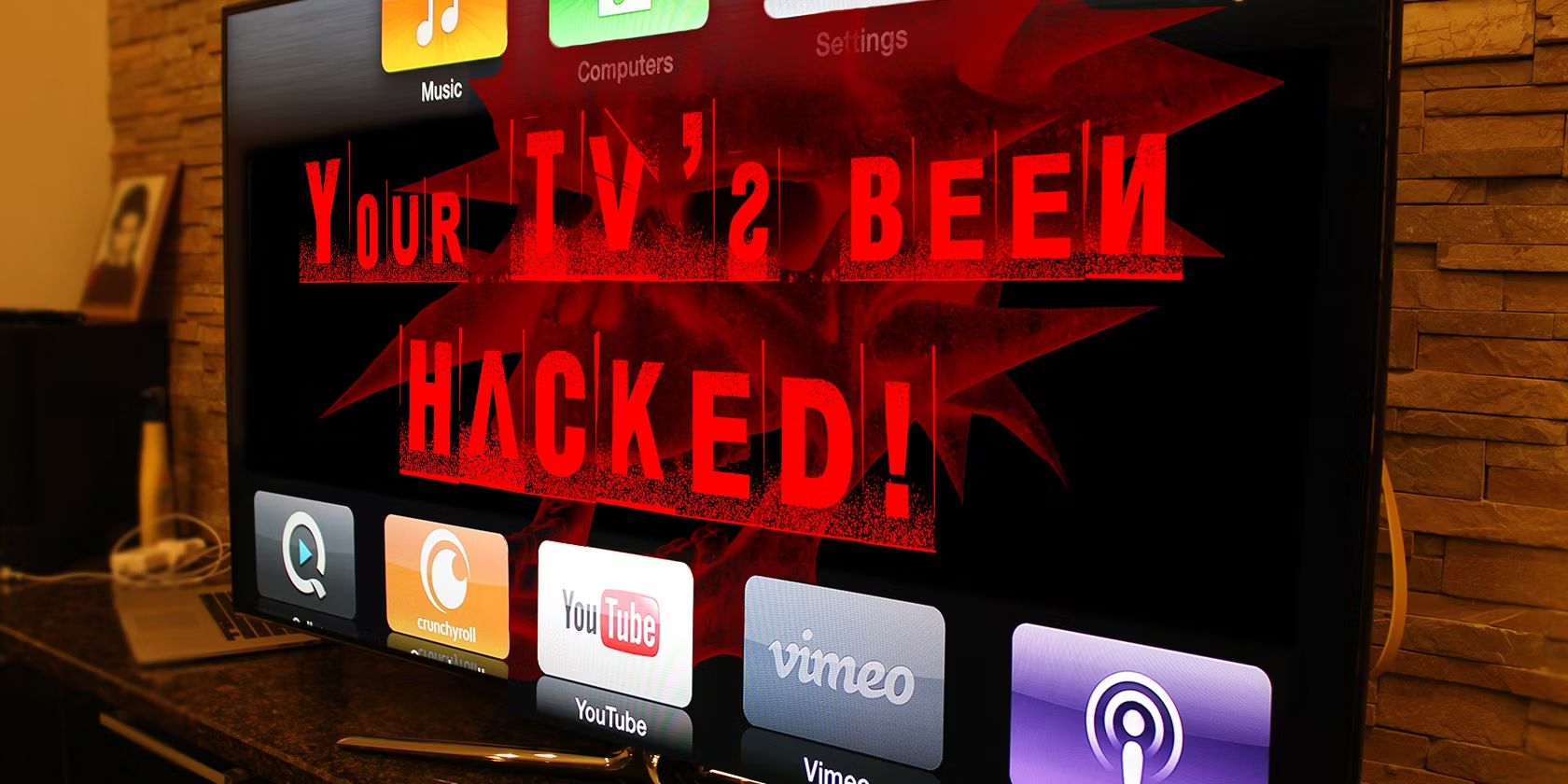Introduction
Welcome to the world of smart TVs, where a vast array of entertainment is just a click away. With their sleek design and interactive features, these devices have become an integral part of our modern homes. However, as technology continues to advance, so do the risks associated with it. One particular concern that has been raised is the potential vulnerability of smart TV cameras.
Smart TVs are equipped with built-in cameras that enable users to engage in video calls, take selfies, and even control certain features using motion gestures. While this technology offers convenience and enhances the overall user experience, it also raises valid privacy concerns. The ability for a camera to capture and transmit audio and visual data can make users susceptible to surveillance and unauthorized access.
This article aims to shed light on the potential risks associated with smart TV cameras and provide tips on how to protect your privacy. It is important to note that the intention here is not to encourage illegal activities but to raise awareness about the vulnerabilities that exist in this technology.
By understanding these risks and taking necessary precautions, users can enjoy the benefits of smart TVs without compromising their privacy and security. Let’s delve deeper into the subject and explore the potential dangers that surround smart TV cameras, as well as the steps we can take to mitigate these risks.
Understanding Smart TV Cameras
Smart TV cameras are embedded within the frame of the television and serve various functions, depending on the model and manufacturer. They are primarily designed to facilitate video calls, allowing users to connect with their friends and family in a more immersive way. These cameras are also utilized for features like facial recognition and motion control, enabling users to navigate through menus and control certain functions with gestures.
These cameras are typically equipped with high-resolution sensors, capable of capturing detailed images and videos. They are often accompanied by built-in microphones, facilitating two-way communication during video calls or voice control interactions.
One important aspect to note is that smart TV cameras are not always active. They can be turned on or off by the user, providing greater control over when and how they are used. However, it is essential to be cautious as certain applications or features may automatically activate the camera without explicit user consent.
As with any internet-connected device, smart TV cameras are vulnerable to potential security breaches and unauthorized access. Hackers, with malicious intent, may exploit vulnerabilities in the smart TV’s operating system or network connections to gain access to the camera feed. This not only poses a severe threat to user privacy but also opens the door for potential surveillance and misuse of personal data.
Moreover, the integration of voice recognition technology in smart TVs raises additional concerns. In order to process voice commands, these devices often rely on cloud-based recognition systems. This means that audio data captured by the smart TV’s microphone may be transmitted to external servers for processing, potentially exposing sensitive information to security risks.
Understanding the capabilities and limitations of smart TV cameras is crucial in order to assess the potential risks and take appropriate measures to safeguard your privacy. In the following sections, we will explore these risks in more detail and provide actionable steps to protect yourself from potential threats.
Potential Risks and Privacy Concerns
While smart TV cameras offer convenience and enhanced functionality, they also come with potential risks and privacy concerns that users should be aware of. Here are some of the main threats to consider:
- Unauthorized Access: Hackers may exploit vulnerabilities in the smart TV’s software or network connections to gain unauthorized access to the camera feed. This can lead to invasion of privacy, as hackers can remotely view and record your activities without your knowledge or consent.
- Data Breaches: The audio and video data captured by smart TV cameras can be intercepted or accessed by unauthorized individuals. This sensitive data may include personal conversations, passwords, or other sensitive information, which can be used for criminal activities or blackmail.
- Surveillance: Smart TV cameras have the potential to be utilized as surveillance devices. In some cases, manufacturers or third parties may collect and analyze data from these cameras for market research or targeted advertising purposes. This raises concerns about user privacy and the extent to which our actions are monitored and recorded.
- Recording without Consent: Certain applications or features on smart TVs may activate the camera without the explicit knowledge or consent of the user. This can result in unintentional recording of private moments or conversations, leading to breaches of trust and privacy.
- Physical Security: It is important to consider the physical security of the smart TV camera as well. Hackers could potentially gain control over the camera’s motorized lens, enabling them to remotely adjust the camera’s position and focus. This could facilitate invasive surveillance or even physical threats if the camera is manipulated to capture sensitive areas of the user’s home.
These risks highlight the importance of taking proactive measures to protect your privacy when using smart TV cameras. In the following sections, we will discuss some basic precautions you can take to mitigate these risks and ensure a safer and more secure user experience.
Basic Precautions
Protecting your privacy and security while using smart TV cameras is essential. By implementing some basic precautions, you can minimize the potential risks associated with these devices. Here are a few steps you can take:
- Secure your Wi-Fi network: Ensure that your home Wi-Fi network is password protected and uses encryption protocols like WPA2. This reduces the chances of unauthorized individuals accessing your network and potentially gaining access to your smart TV camera.
- Regularly update your device: Keep your smart TV’s firmware and software up to date. Manufacturers often release updates to address security vulnerabilities and enhance overall device performance. Regularly check for updates and install them promptly.
- Disable or cover the camera: When the camera is not in use, it is advisable to disable it or cover it with a physical barrier. This prevents accidental activation or any unauthorized access to the camera feed.
- Review privacy settings: Take the time to review the privacy settings on your smart TV. Disable any features or applications that you do not intend to use, especially those related to voice control or data sharing. Customize the settings according to your comfort level with sharing personal information.
- Beware of suspicious apps: Only download and install trusted applications from official app stores. Be cautious of third-party apps that may request unnecessary permissions or have suspicious reviews. These apps could potentially compromise the security of your smart TV and its camera.
- Use a physical shutter or lens cap: Consider using a physical shutter or lens cap specifically designed for your smart TV camera. This allows you to physically block the camera when it is not in use, providing an extra layer of privacy protection.
- Regularly review camera permissions: Check the settings of individual apps that use the camera and review their permissions. Disable camera access for any apps that you do not trust or do not require camera functionality.
- Be cautious during video calls: Exercise discretion when participating in video calls on your smart TV. Avoid discussing sensitive or personal information that you would not want to be recorded or intercepted.
Implementing these basic precautions can significantly reduce the potential risks associated with smart TV cameras. However, it is important to note that no security measure is foolproof. Therefore, it is crucial to stay informed about emerging threats and adapt your approach accordingly.
Identifying Vulnerabilities
In order to effectively protect your privacy and security, it is important to understand the potential vulnerabilities that smart TV cameras may have. By identifying these vulnerabilities, you can take appropriate measures to address them. Here are some common vulnerabilities to be aware of:
- Outdated Software and Firmware: Smart TVs, like any other technology, can become vulnerable if the software or firmware is outdated. Hackers often exploit known vulnerabilities in older versions, so it is crucial to regularly update your smart TV’s software and firmware to the latest available versions.
- Weak Passwords: If you do not set strong passwords for your smart TV and related accounts, you are putting yourself at risk. Weak passwords can be easily guessed or hacked, providing unauthorized access to the camera feed and other private information. Make sure to choose complex passwords that include a combination of upper and lower case letters, numbers, and special characters.
- Insecure Network Connections: Smart TVs connect to the internet through Wi-Fi networks, and if these network connections are not secured, they can be susceptible to hacking. Always use secure Wi-Fi connections and avoid using public or untrusted networks to minimize the risk of unauthorized access to your smart TV camera.
- Unverified Apps and Downloads: Installing unverified apps or downloading content from unfamiliar sources can introduce malware or spyware onto your smart TV. These malicious programs can compromise the security of your smart TV camera and compromise your privacy. Stick to official app stores and trusted sources for downloads.
- Lack of Encryption: Encryption plays a vital role in securing data transmitted between devices and servers. If your smart TV does not have proper encryption protocols in place, it becomes easier for hackers to intercept and access your camera feed and other sensitive data. Ensure your smart TV utilizes encryption to protect your privacy.
- Manufacturer Vulnerabilities: Some vulnerabilities may be inherent in the smart TV’s hardware or software, which are beyond the control of the user. Keep yourself updated with news and alerts regarding your smart TV’s manufacturer, as they may release patches or provide guidance on how to address any security vulnerabilities found.
Identifying potential vulnerabilities and taking appropriate steps to mitigate them is crucial in maintaining the privacy and security of your smart TV camera. By addressing these vulnerabilities, you can reduce the risk of unauthorized access and ensure a safer user experience.
Exploiting Vulnerabilities
While it is important to protect your smart TV camera from potential vulnerabilities, it is also crucial to understand how these vulnerabilities can be exploited by malicious actors. By understanding the methods and techniques used by hackers, you can better prepare yourself and take proactive measures to safeguard your privacy. Here are some common ways vulnerabilities in smart TV cameras can be exploited:
- Remote Access: Hackers can gain unauthorized remote access to your smart TV camera by exploiting vulnerabilities in the device’s software or network connections. Once they gain access, they can view, record, or manipulate the camera feed, potentially invading your privacy.
- Man-in-the-Middle Attacks: Hackers can intercept the communication between your smart TV and its server by positioning themselves between the two endpoints. Through this technique, they can access and manipulate the camera feed, compromising your privacy and potentially exposing sensitive information.
- Social Engineering: Social engineering is a technique used by hackers to manipulate individuals into divulging sensitive information or performing certain actions. For instance, a hacker may pretend to be a representative from the smart TV manufacturer or service provider and trick you into providing login credentials or granting access to your camera feed.
- Malware Attacks: Malicious software or malware can be used to exploit vulnerabilities in your smart TV’s software or applications. Once installed on your device, the malware can gain access to the camera feed, record your activities, and transmit this information to the attacker without your knowledge.
- Brute Force Attacks: Brute force attacks involve systematically guessing combinations of usernames and passwords until the correct credentials are found. If you have weak or easily guessable passwords for your smart TV or associated accounts, hackers may use this method to gain unauthorized access to your camera feed.
- Exploiting Third-Party Integrations: Smart TVs often have integrations with third-party applications or services. Hackers may exploit vulnerabilities in these integrations to gain access to your camera feed or manipulate its functionality.
It is crucial to remain vigilant and practice good cyber hygiene to reduce the risk of exploitation. Regularly update your smart TV’s software, use strong and unique passwords, be cautious of suspicious emails or messages, and install reputable security software to protect your device.
By being aware of these potential exploits and taking appropriate precautions, you can enhance the security of your smart TV camera and minimize the risk of unauthorized access to your private life.
Ethical Considerations
When discussing the use of smart TV cameras and the potential risks associated with them, it is necessary to delve into the ethical considerations surrounding this technology. As smart TV cameras have the capability to capture audio and visual data, it is important to reflect on the ethical implications of their use. Here are some key ethical considerations to keep in mind:
- Privacy: Privacy is a fundamental right that must be respected and protected. The use of smart TV cameras raises concerns about the invasion of privacy, as individuals may unknowingly be recorded or monitored without their consent. It is essential for manufacturers and users to prioritize privacy and take necessary precautions to ensure that personal information remains secure.
- Surveillance: The integration of smart TV cameras presents the potential for surveillance, whether it’s by unauthorized hackers, manufacturers, or third parties. The extent to which our actions are monitored and recorded raises ethical questions about the balance between convenience and privacy. Transparency and informed consent are crucial in mitigating these concerns.
- Data Security: The storage and transmission of audio and visual data captured by smart TV cameras must be treated with the utmost care. Manufacturers and users have a responsibility to ensure that appropriate security measures are in place to safeguard this data from breaches or misuse. Safeguarding personal information is not only an ethical obligation but also a legal requirement in many jurisdictions.
- Transparency: Users should have clear and easily accessible information about how their smart TV cameras operate and how their data is collected, stored, and shared. Transparency allows individuals to make informed decisions about using such technology and enables them to exercise control over their personal information.
- Informed Consent: Obtaining informed consent is a critical ethical consideration when it comes to the use of smart TV cameras. Users should have the ability to grant or revoke consent for their camera to be activated and their data to be collected. Clear communication and detailed privacy policies are necessary to ensure transparency and empower users to make informed choices about their privacy.
- Accountability: Stakeholders, including manufacturers, developers, and service providers, should be held accountable for upholding ethical practices in the design, development, and implementation of smart TV cameras. This includes adopting comprehensive security measures, ensuring compliance with privacy regulations, and addressing any vulnerabilities or breaches that may occur.
Considering these ethical considerations is crucial as we navigate the evolving landscape of smart TV cameras. It is essential for individuals, technology providers, and regulatory bodies to work together to establish and uphold ethical standards that respect privacy, protect personal data, and prioritize user consent and control.
Legal Implications
The use of smart TV cameras brings about various legal implications that must be carefully considered to ensure the protection of individuals’ rights and privacy. As technology evolves, so does the need for legislation and regulations to address the use, security, and potential risks associated with these devices. Here are some key legal implications to be aware of:
- Data Protection Laws: Many jurisdictions have implemented data protection laws that govern the collection, storage, and use of personal data. Smart TVs, specifically their cameras, fall under the purview of these laws, and manufacturers are required to adhere to the guidelines outlined to protect user privacy and secure personal data.
- Consent and Opt-out: Laws such as the General Data Protection Regulation (GDPR) in the European Union emphasize the importance of obtaining informed consent for the collection and processing of personal data. Users must be provided with clear information about how their data is being used and have the ability to opt out of certain data collection practices, including the use of smart TV cameras.
- Video and Audio Recording Laws: The use of smart TV cameras raises questions about laws related to video and audio recording. In many jurisdictions, it is illegal to record someone’s private conversations without their consent. It is crucial for manufacturers and users to understand and comply with these laws to avoid legal consequences.
- Cybersecurity Regulations: Governments around the world are implementing cybersecurity regulations to protect against hacking and data breaches. These regulations require organizations, including smart TV manufacturers, to implement stringent security measures to protect user data and prevent unauthorized access to devices and camera feeds.
- Online Privacy Guidelines: Regulatory bodies, such as the Federal Trade Commission (FTC) in the United States, provide guidelines and recommendations regarding online privacy. These guidelines encourage transparency, data protection, and user control over personal information, making these principles applicable to smart TV cameras as well.
- Product Liability Laws: Manufacturers of smart TV cameras can be held liable for any damages resulting from security breaches or misuse of personal data. Product liability laws ensure that manufacturers are accountable for the security and privacy of their products, placing an emphasis on implementing robust security measures and adequately informing users about potential risks.
It is important for both manufacturers and users to stay informed about their legal obligations and rights concerning the use of smart TV cameras. By complying with applicable laws and regulations, stakeholders can ensure that the deployment and use of these devices align with ethical standards and protect the privacy of individuals.
Conclusion
The use of smart TV cameras offers numerous benefits, but it also comes with potential risks and privacy concerns. Understanding these risks and taking appropriate precautions is crucial to protect your privacy and security while enjoying the convenience of these devices.
By implementing basic precautions, such as securing your Wi-Fi network, updating your device, and reviewing privacy settings, you can minimize the potential vulnerabilities that smart TV cameras may have. It is also important to be aware of ethical considerations and legal implications when using smart TV cameras, ensuring that privacy rights are respected and legal obligations are met.
Remember to stay informed about emerging threats and stay up to date with software and firmware updates for your smart TV. Regularly review and adjust the privacy settings of your device, and consider using physical barriers or covers when the camera is not in use. By being proactive and vigilant, you can mitigate the potential risks associated with smart TV cameras.
Lastly, it is crucial for manufacturers and regulatory bodies to prioritize privacy and security when designing and implementing smart TV cameras. Transparency, informed consent, accountability, and adherence to data protection laws are essential in fostering trust and ensuring the ethical use of this technology.
As smart TV cameras continue to evolve, it is important for individuals, manufacturers, and regulators to work together to strike a balance between convenience and privacy. Through collective efforts, we can promote the responsible use of smart TV cameras and create a safer digital environment for all users.







